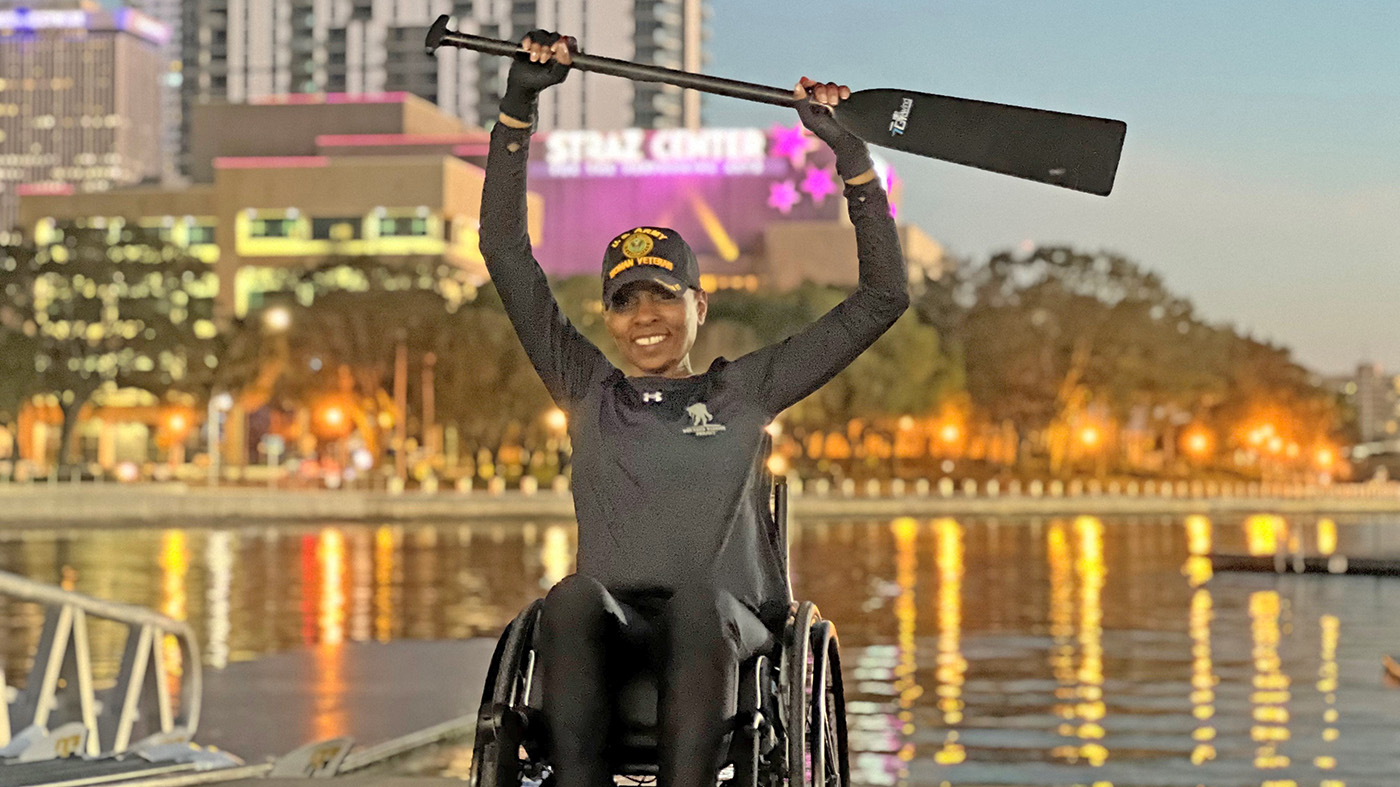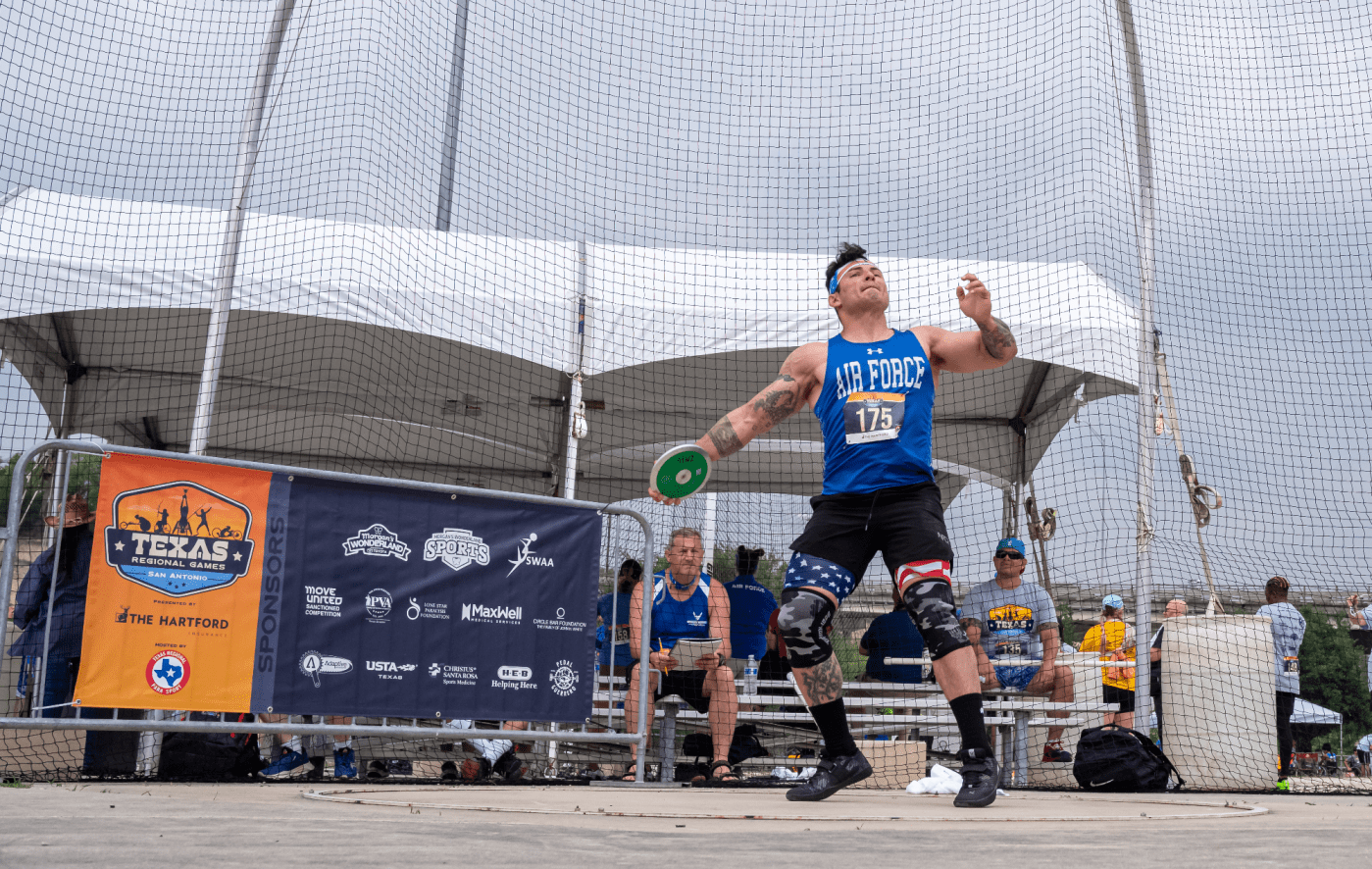
That’s how my friend and University of South Florida colleague, Merry Lynn Morris, describes a “hands-free” wheelchair she first envisioned in 2000. As the daughter of a severely injured Navy Veteran, she helped take care of her father William for 21 years. Most of those years Bill spent in traditional wheelchairs after frequent seizures and left-side paralysis robbed him of his ability to walk.
“Once a person is in a chair, they become sort of boxed in and you still want access to the person. You want to hug them, you want to shake their hand, you want to be close to them and it’s hard to do, the way chairs are currently structured,” Merry Lynn explains.
The hands-free chair’s unique mechanisms enable users to move in the desired direction with minimal effort, leaving their arms and hands free. The invention is equipped with position sensors that allow users to direct the chair with small shifts in upper-body movement. The users can shift their weight from left to right as well as forward and backward to direct the chair. Feet need to be positioned correctly, but it is experienced mostly through abdominal strength, which is great for improving posture and alignment. Another feature, important to Merry Lynn, is the “hovering” capability to imitate natural human interaction with others while utilizing a push/pull responsiveness–as in dancing.
Unlike wheelchairs that use only a joystick to move them, the movement of the seat creates electrical signals, which are transmitted to the wheelchair controller. The chair also possesses a switch, which allows a user to switch from seat control to a hand control as needed. The idea is to enable as much flexibility in control and movement as possible.
“It is important that we urge new ways of thinking about ‘disability’ and look towards our universal needs as a society to support a healthy, creative, mobile population,” Merry Lynn adds.
For now, the hands-free wheelchair is designed for people who have good core muscle strength and do not have injuries high on their spinal cord. It can also be very useful to those with no disability or with just fatigue, while assisting efficiency of movement in work station routines (office or otherwise) and for anyone who needs to have their hands free while doing other things.
One person excited to try the hands-free chair is Georgia National Guard Sgt. Christopher “Kit” Lowe. Lowe was wounded in a Taliban ambush in Afghanistan in August 2009; Lowe was hit by machine gun fire in the upper right thigh during combat operations in the Alasai Valley when he was trying to save one of his teammates. While the damage to his leg was extensive, Lowe avoided amputation and hopes the nerve damage can eventually be repaired.

“I could have used a chair like this right after I got hit (by gun fire),” Kit explains. “And I know many other wounded veterans who could benefit from it.”
As the design inventor of the chair, Merry Lynn also drew upon her thirteen years of teaching anatomy-based dance classes to correct posture/alignment and for injury prevention in dancers. She teaches “Research in Dance” and “Dance Kinesiology” at the University of South Florida while being a member of IADMS (International Association of Dance Medicine & Science) where she recently presented her research and metabolism studies on the hands-free wheelchair at their annual conference in the UK. A dance professor and choreographer by profession, Merry Lynn has always been interested in including dancers with disabilities in her art form. But, she was concerned about a wheelchair dancer’s ability for expression.
“I wanted to make the dancer hands free, thinking/realizing that especially in manual wheelchairs, but even in power chairs, that they have to put their hands on the wheels and they are constantly having to pump that chair and it doesn’t leave them free to interact,” describes Merry Lynn.
Today, Merry Lynn’s original idea is a real functional hands-free wheelchair, with a patent from the U.S. Patents and Trademarks Office. The patent is a major milestone for the project, which has united researchers from University of South Florida’s School of Theatre and Dance, the Department of Mechanical Engineering’s School Center for Assistive & Rehabilitation Robotics Technology and the School of Physical Therapy in the vision of expanding creativity and mobility for all. The continuing collaborative effort has far-reaching inclusion for diverse populations of community, medicine/rehabilitation, training, and the Arts.
The research team is now busy creating Prototype 2 of the chair and hopes to be in human testing phase by March 2011. Prototype 2 will be even more advanced than the current version with different seating options offered based on the needs of the chair’s user. And, it’s going to even have a remote control option so the caregiver can control the chair, if needed. Along with safety, most important to Merry Lynn is also the design aesthetic of the chair to ergonomically allow a user to improve posture and alignment while seated in sleek design.

To view an in-depth video about the development of the hands free wheelchair including an interview with VA Assistant Secretary Tammy Duckworth, visit this YouTube link.
For more information about this wheelchair, please visit: http://rdc.arts.usf.edu/
Liisa Hyvarinen Temple is the wife of USAF SMSgt Rex Temple; SMSgt Temple and Sgt Lowe served together in Afghanistan. Hyvarinen Temple has taught at the University of South Florida since 2002.
Topics in this story
More Stories
Army Veteran Malika Montgomery says one of the things that helped her live her best life with multiple sclerosis was surrounding herself with positive people.
Acknowledging the issues that Veterans face and working toward solutions is crucial for ensuring they have the support they need to thrive in civilian life.
Last year, Move United hosted 26 adaptive sports competitions in 22 states for 1,537 individual athletes. This year, that number is increasing to 35 events in 24 states for even more Veteran athletes.






Merry Lynn,
So very proud of what you have accomplished through your experience and love for your Veteran father.
I can’t wait to see this new modern mobility device that will give so much more than mobility to Veterans who need this.
So excited for you and your accomplishment and can’t wait to see them around the VAMCs.
Have a wonderful Holliday and many Blessings to you and your family